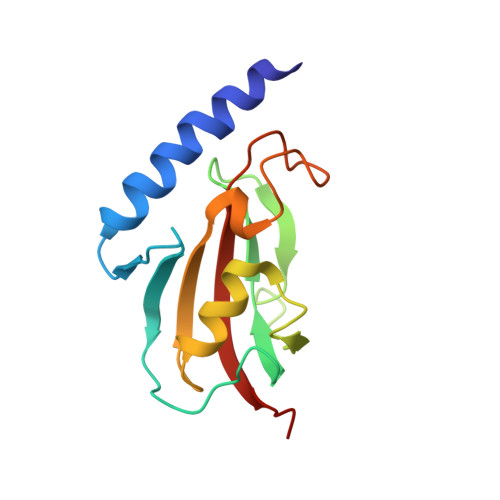Solution structure of the Legionella pneumophila Mip-rapamycin complex.
Ceymann, A., Horstmann, M., Ehses, P., Schweimer, K., Paschke, A.K., Steinert, M., Faber, C.(2008) BMC Struct Biol 8: 17-17
- PubMed: 18366641
- DOI: https://doi.org/10.1186/1472-6807-8-17
- Primary Citation of Related Structures:
2VCD - PubMed Abstract:
Legionella pneumphila is the causative agent of Legionnaires' disease. A major virulence factor of the pathogen is the homodimeric surface protein Mip. It shows peptidyl-prolyl cis/trans isomerase activty and is a receptor of FK506 and rapamycin, which both inhibit its enzymatic function. Insight into the binding process may be used for the design of novel Mip inhibitors as potential drugs against Legionnaires' disease. We have solved the solution structure of free Mip77-213 and the Mip77-213-rapamycin complex by NMR spectroscopy. Mip77-213 showed the typical FKBP-fold and only minor rearrangements upon binding of rapamycin. Apart from the configuration of a flexible hairpin loop, which is partly stabilized upon binding, the solution structure confirms the crystal structure. Comparisons to the structures of free FKBP12 and the FKBP12-rapamycin complex suggested an identical binding mode for both proteins. The structural similarity of the Mip-rapamycin and FKBP12-rapamycin complexes suggests that FKBP12 ligands may be promising starting points for the design of novel Mip inhibitors. The search for a novel drug against Legionnaires' disease may therefore benefit from the large variety of known FKBP12 inhibitors.
Organizational Affiliation:
Department of Experimental Physics 5, University of Würzburg, Würzburg, Germany. asceyman@physik.uni-wuerzburg.de















